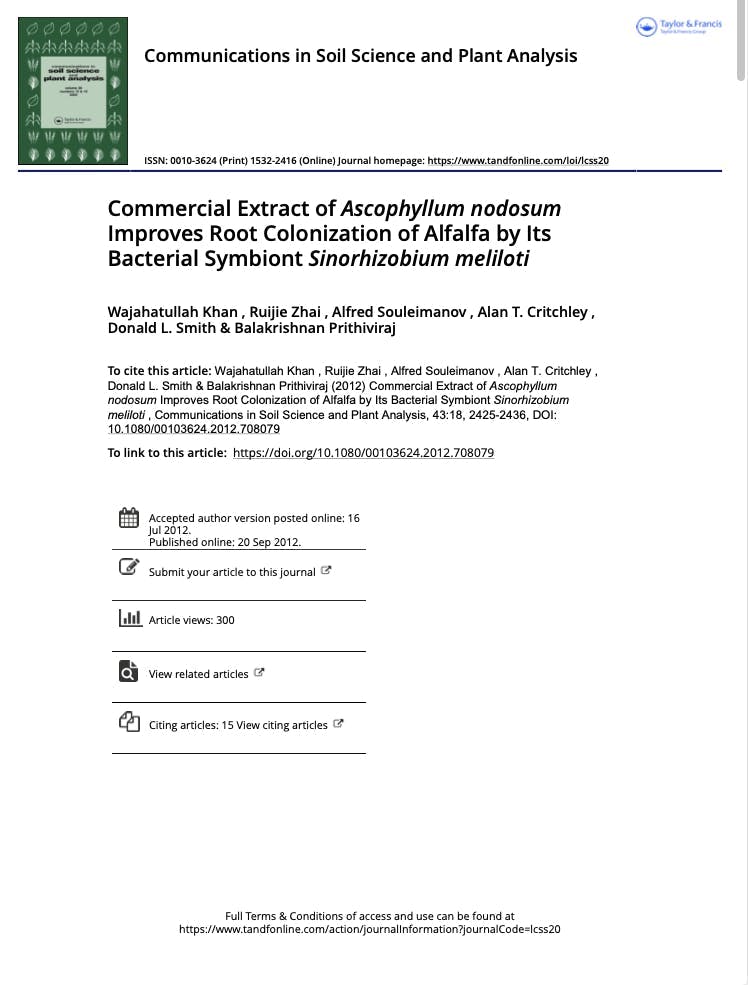The soil bacterium Sinorhizobium meliloti forms a symbiotic relationship with alfalfa (Medicago sativa) roots, which results in the formation of intracellular root nodules. This symbiosis increases nitrogen (N) in the soil; however, to establish such a syner-gistic relationship, a complex communication system is required between the bacterium and its legume host. Rhizobacteria are known to respond to plant root exudates and produce signal molecules known as “Nod” factors. Research suggests that the brown seaweed (Ascophyllum nodosum) extract (ANE) stimulates both root nodulation and growth of alfalfa (Khan et al. 2011). To elucidate the mechanism of action, the effects of ANE on the early stages of root–rhizobia interactions were examined. A. nodosum extract (ANE) and its organic fractions were prepared and alfalfa roots were treated. After 2 days, the treated roots were inoculated with S. meliloti. The roots from treated plants were excised and observed for colony-forming units. To verify whether ANE elicited the synthesis and secretion of factors similar to those induced by luteolin, S. meliloti cultures were treated with ANE and the bacterial components were analyzed by high-pressure liquid chromatography (HPLC). To study Nod factor induction by S. meliloti due to ANE treatment, a root hair deformation assay was performed. A trans-lational fusion of S. meliloti NodC:LacZ (strain JM57) was used to observe the effect of ANE on bacterial gene expression. When S. meliloti culture medium was supplemented with ANE, no effect on bacterial growth was observed. However, it was observed that the attachment of S. meliloti to the root hairs was improved. Similarly in vitro ANE root treatments, followed by S. meliloti inoculation, increased bacterial colonies. HPLC profiles and a root hair deformation assay suggested that ANE elicits production of compounds similar to the Nod factor, which are normally induced by the plant signaling molecule luteolin. The results suggest that ANE may contain compound(s) that promote the legume–rhizobia symbiotic relationship and plant signaling.

September 19, 2012 / Article Read Document